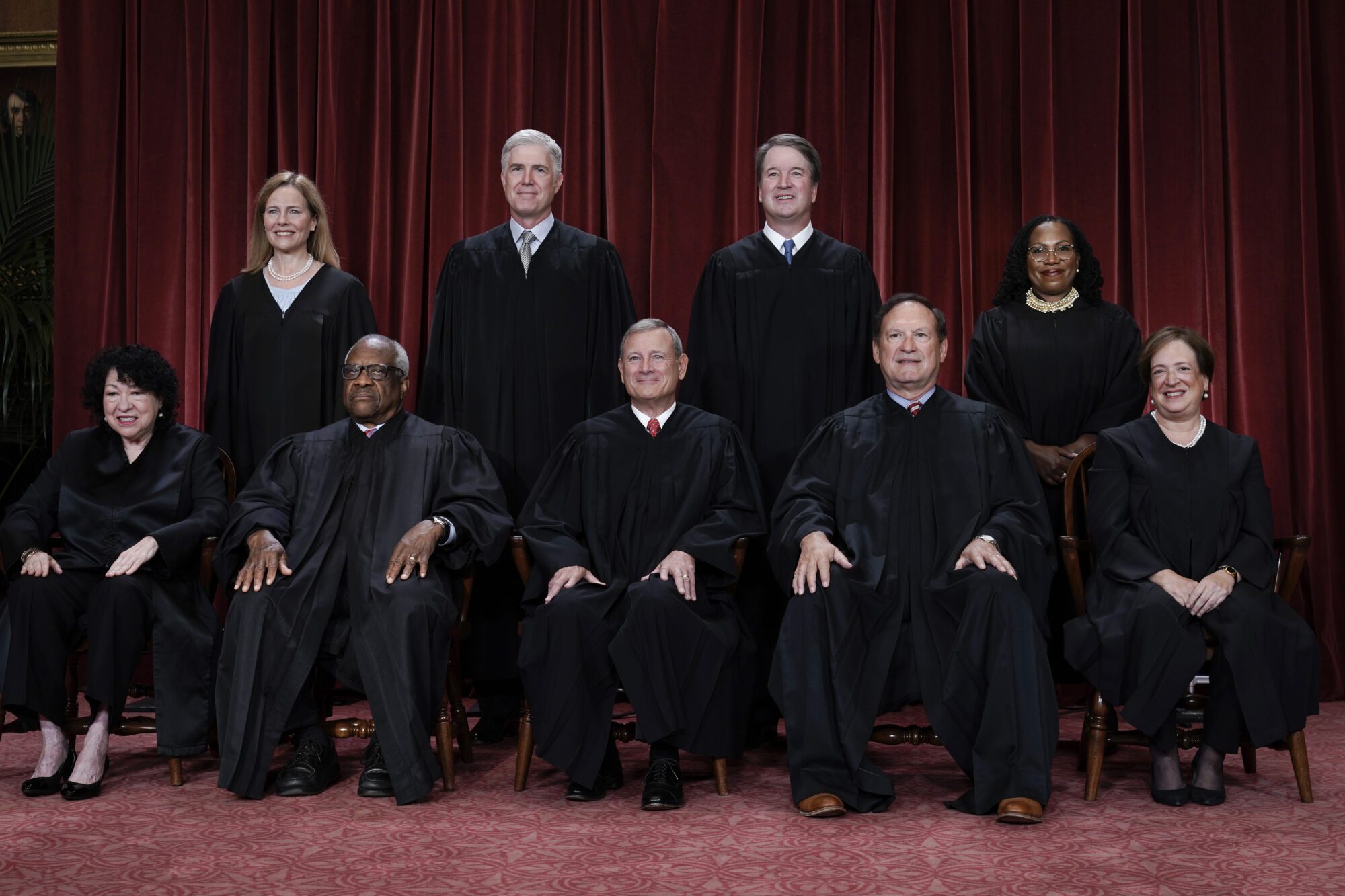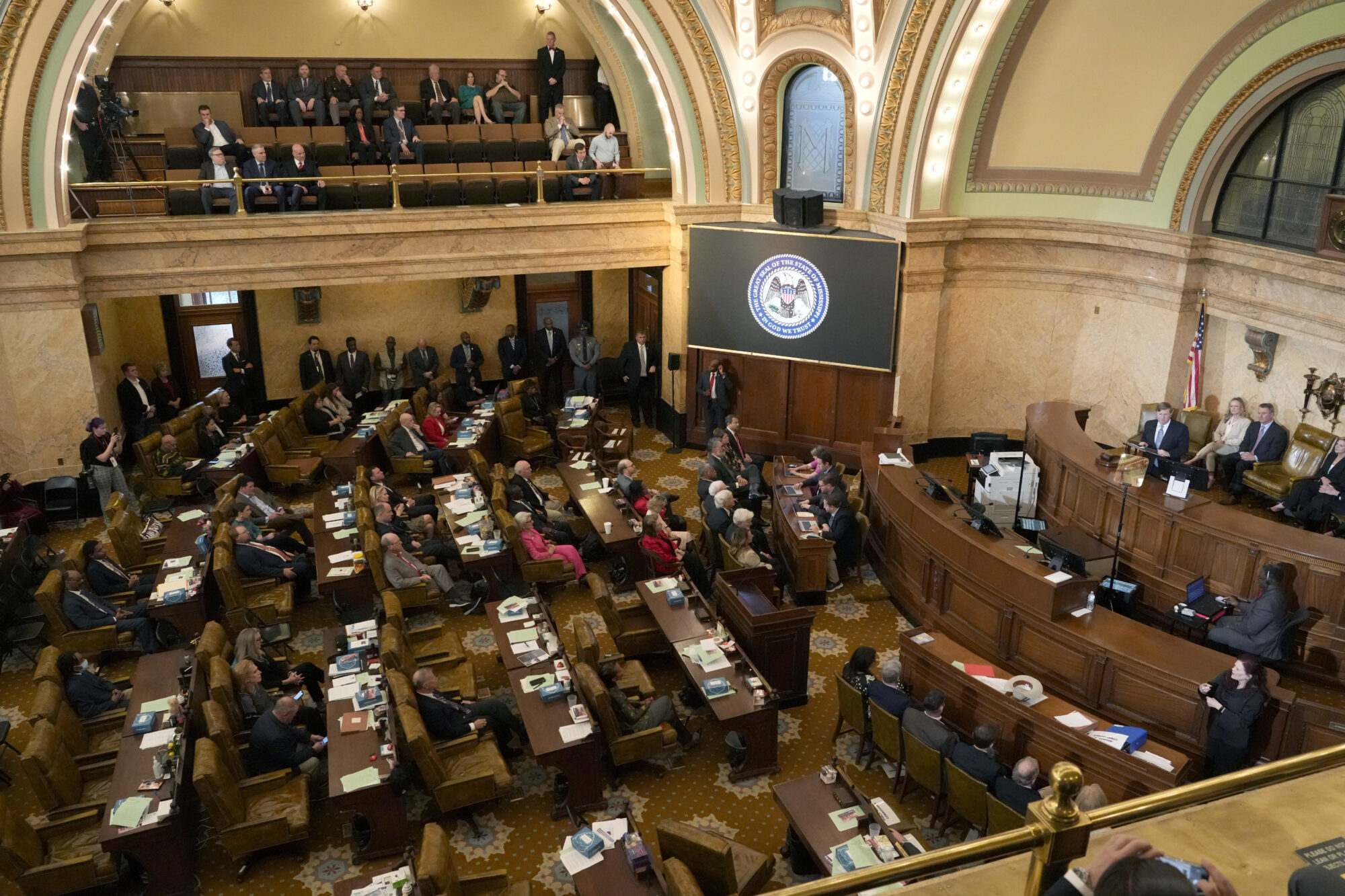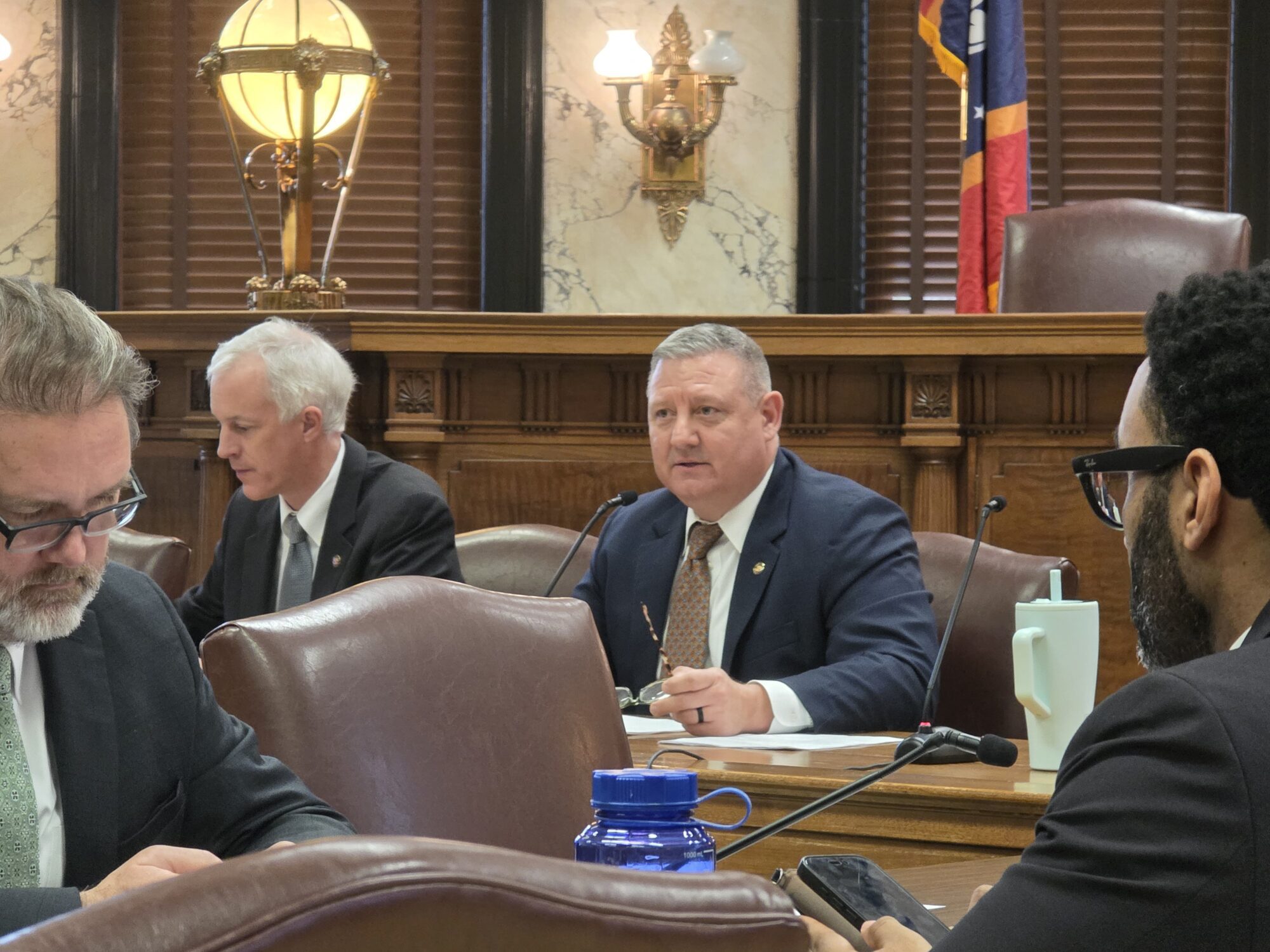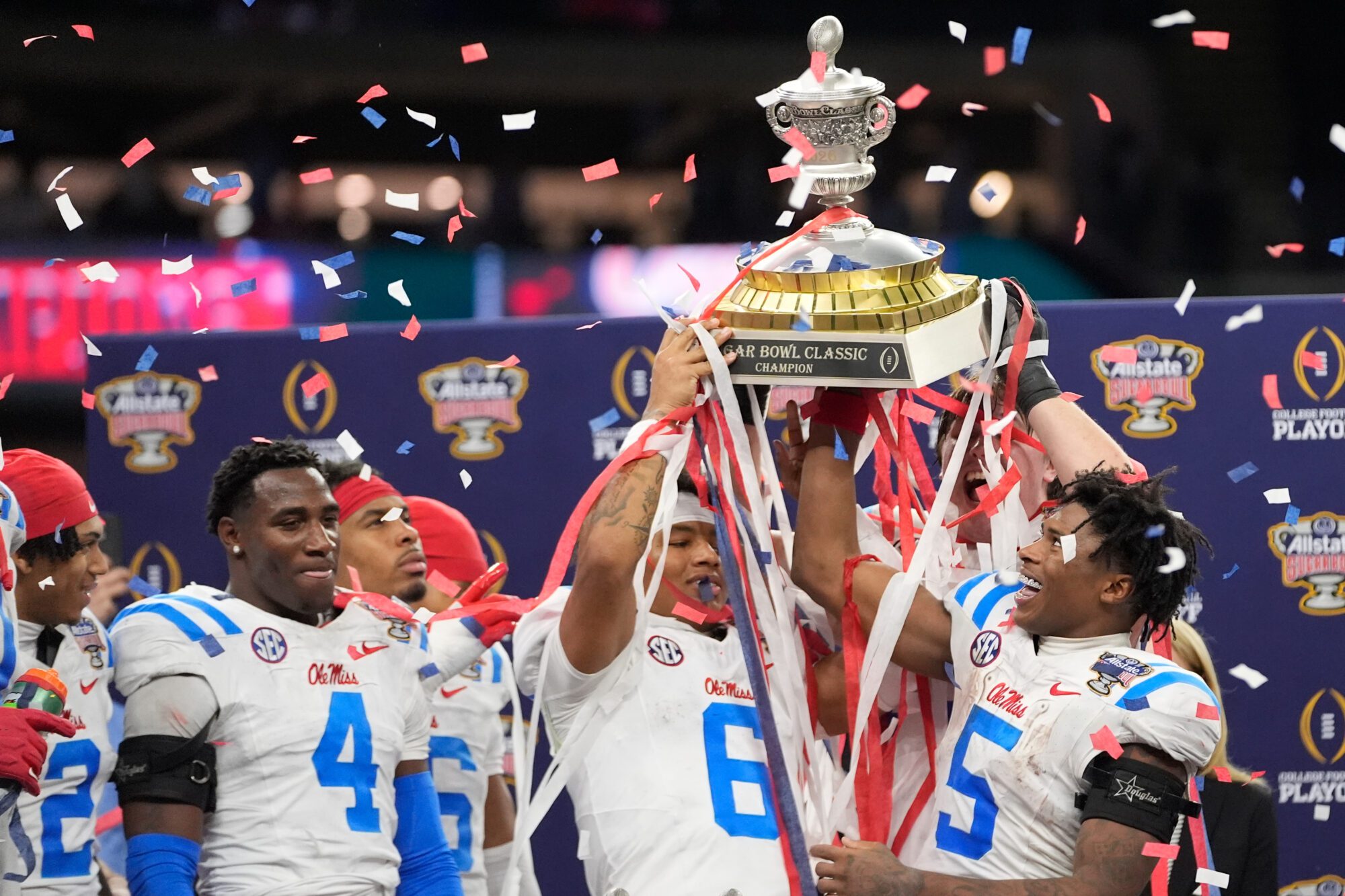
FILE - Members of the Supreme Court sit for a new group portrait following the addition of Associate Justice Ketanji Brown Jackson, at the Supreme Court building in Washington, Oct. 7, 2022. Bottom row, from left, Associate Justice Sonia Sotomayor, Associate Justice Clarence Thomas, Chief Justice of the United States John Roberts, Associate Justice Samuel Alito, and Associate Justice Elena Kagan. Top row, from left, Associate Justice Amy Coney Barrett, Associate Justice Neil Gorsuch, Associate Justice Brett Kavanaugh, and Associate Justice Ketanji Brown Jackson. (AP Photo/J. Scott Applewhite, File)
The majority opinion makes it clear that colleges and universities should base admissions decisions on students’ abilities and experiences, not their skin color.
On Thursday, the U.S. Supreme Court ruled that Harvard and the University of North Carolina (UNC) violated the equal protection clause of the 14th Amendment, banning the use of affirmative action that considered race as part of their admissions process.
The case – Students for Fair Admissions, Inc. v. President and Fellows of Harvard College – was brought by Students for Fair Admissions (SFFA), a nonprofit organization whose stated purpose is “to defend human and civil rights secured by law, including the right of individuals to equal protection under the law.” According to court documents, SFFA filed separate lawsuits against Harvard and UNC, arguing that their race-based admissions programs violate, respectively, Title VI of the Civil Rights Act of 1964 and the Equal Protection Clause of the 14th Amendment.
Chief Justice John Roberts delivered the majority opinion for the Court. He was joined by Justices Clarence Thomas, Brett Kavanaugh, Amy Coney Barrett, Neil Gorsuch and Samuel Alito.
“The entire point of the Equal Protection Clause is that treating someone differently because of their skin color is not like treating them differently because they are from a city or from a suburb, or because they play the violin poorly or well,” Chief Justice Roberts wrote.
Roberts went on to conclude:
A benefit to a student who overcame racial discrimination, for example, must be tied to that student’s courage and determination. Or a benefit to a student whose heritage or culture motivated him or her to assume a leadership role or attain a particular goal must be tied to that student’s unique ability to contribute to the university. In other words, the student must be treated based on his or her experiences as an individual—not on the basis of race.
Many universities have for too long done just the opposite. And in doing so, they have concluded, wrongly, that the touchstone of an individual’s identity is not challenges bested, skills built, or lessons learned but the color of their skin. Our constitutional history does not tolerate that choice.
Chief Justice Roberts did note that the opinion “does not address the issue, in light of the potentially distinct interests that military academies may present.”
Justice Thomas, in a concurring opinion, wrote that “it seems increasingly clear that universities are focused on ‘aesthetic’ solutions unlikely to help deserving members of minority groups.”
“Respondents and the dissents argue that the universities’ race-conscious admissions programs ought to be permitted because they accomplish positive social goals. I would have thought that history had by now taught a ‘greater humility’ when attempting to ‘distinguish good from harmful uses of racial criteria,'” Thomas wrote, adding, “Finally, it is not even theoretically possible to ‘help’ a certain racial group without causing harm to members of other racial groups.”
Justice Thomas went on to note:
Far from advancing the cause of improved race relations in our Nation, affirmative action highlights our racial differences with pernicious effect. In fact, recent history reveals a disturbing pattern: Affirmative action policies appear to have prolonged the asserted need for racial discrimination…
…Meanwhile, these discriminatory policies risk creating new prejudices and allowing old ones to fester.
Justices Sonia Sotomayer and Elena Kagan dissented. Justice Ketanji Jackson recused herself.
Justice Sotomayer wrote in the dissent that the “text and history of the Fourteenth Amendment make clear that the Equal Protection Clause permits race-conscious measures.”
“The result of today’s decision is that a person’s skin color may play a role in assessing individualized suspicion, but it cannot play a role in assessing that person’s individualized contributions to a diverse learning environment,” Sotomayer concluded.
You can read the full opinion of the Court here.











